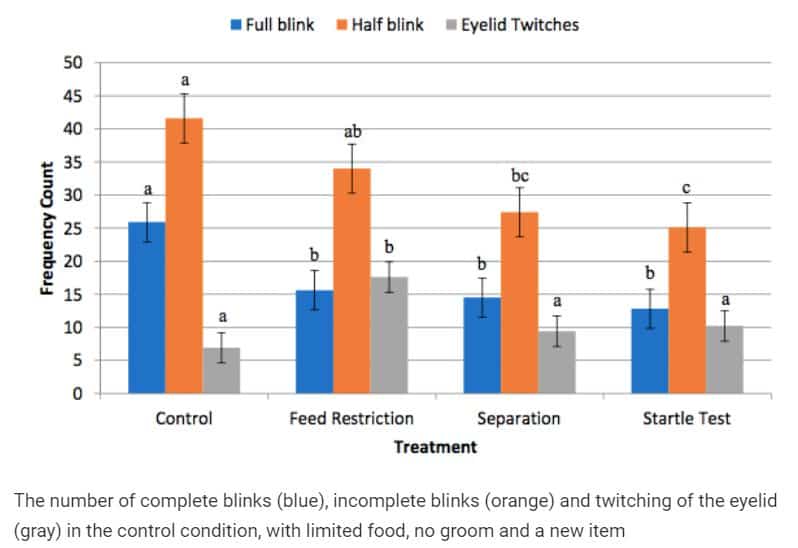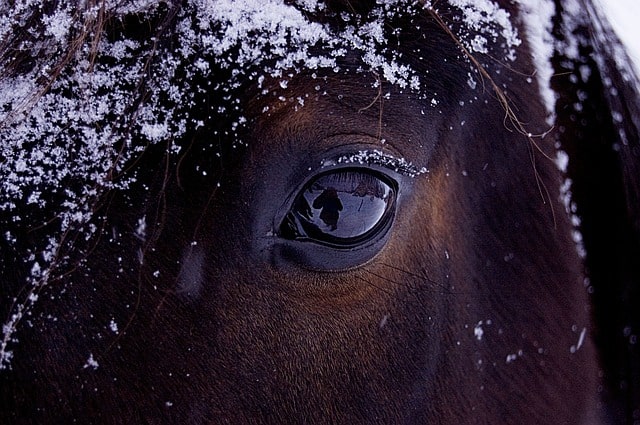Canadian scientists have found that horses may have a stress marker with a rare blink and frequent twitching of the eyelid – just like humans. To do this, they created stressful situations for animals (they took them away from the groom, showed a new object or deprived of food) and monitored the reaction. The most stressful thing for horses was the restriction of nutrition – this was also confirmed by the presence of a rapid heartbeat and other external indicators.
At a certain level, stress is very important for life: largely because it helps maintain a certain level of vigilance, necessary, for example, to avoid danger or to find the necessary resources. Moreover, at a pathological level, stress is one of the main causes of the development of many mental illnesses, including anxiety disorder and depression.
To understand when stress begins to negatively affect life, its level must be determined as accurately as possible – preferably using physiological indicators. For example, to assess the level of steroid hormones of corticosteroids that are produced by the adrenal cortex in response to the stress experienced by the body (for humans, the most reliable hormonal indicator of stress is the level of cortisol). This method, however, is not always suitable: fluid intake to determine the level of hormones can cause additional stress in animals, which will make the indicators incorrect. A safer (and therefore effective) way to measure stress is to evaluate external indicators – but only if it is accurate enough.
One of such indicators can be oculomotor reactions since they largely reflect the work of cognitive and emotional processes taking place in the brain. It was experimentally shown, for example, that in a stressful situation, the frequency of spontaneous blinking decreases, and the eyelid begins to twitch. Whether the same is true for horses, scientists decided to check under the guidance of Katrina Merkies from the University of Guelph.
In their study, 33 domestic horses (Equus caballus) of several breeds created stressful situations – there were three of them. In the first next to the horse was a stranger, and the horse, who was watching them, was out of sight; in the second hungry horses were tied to a pole and in front of their eyes fed another horse, not giving it the food itself; in the third situation, the horses were isolated from their relatives so that she did not see them, but heard, and then threw a rubber ball in front of her. During the experiment, the animals’ behaviour was filmed and then analysed the number of blinks and twitches of the eyelid, comparing it to a control condition – the condition of horses outside of a stressful situation. Also during the experiment, the scientists measured the rhythm of animals and other possible markers: the movements of the head, ears and mouth.
In a normal, non-stressful situation, horses blinked an average of eight to nine times per minute, and under the influence of stress, this indicator dropped to five; the frequency of twitching of the eyelid also increased – from two times per minute to six. The horses also completely closed their eyes when blinking only in the control condition, and during stressful situations they did not fully cover them. Twitching of the eyelid most often (p <0.0001) was observed in situations where animals were restricted to food – then they had the highest heart rate, they behaved more restlessly and jerked their heads. From this, scientists concluded that horses experience the greatest stress when they do not receive food.

Thus, the authors were able to show that a decrease in natural blinking and a more frequent twitching of the eyelid can be used as a marker of stress in horses. The fact that food restriction turned out to be the most stressful for animals, according to the authors, is understandable: all the participants in the study are horses for riding, so they could get used to the absence of a groom and new subjects. In general, the work shows that to assess the psycho-emotional state of the horse and take measures, quite simple observations of their gaze are enough.
